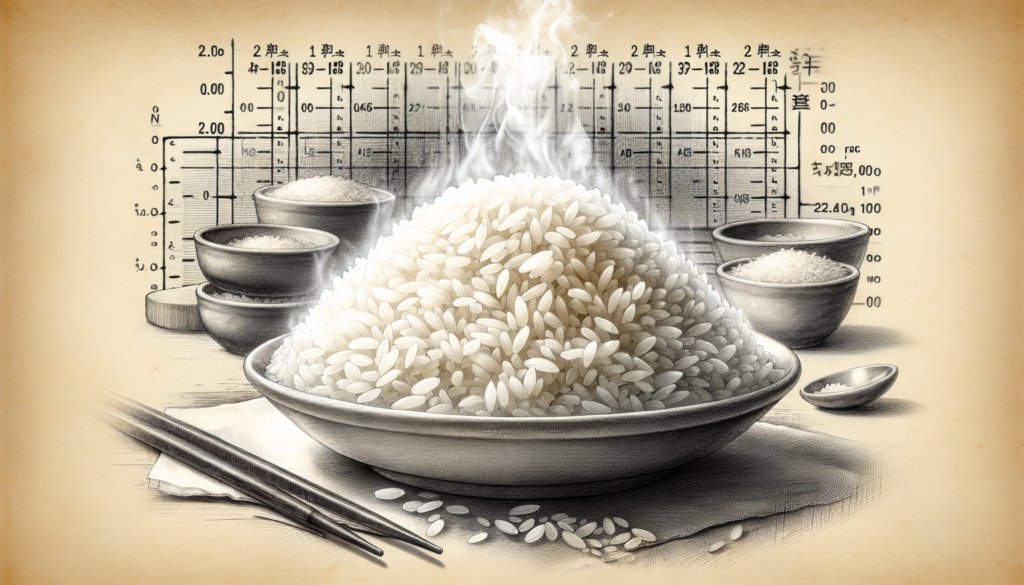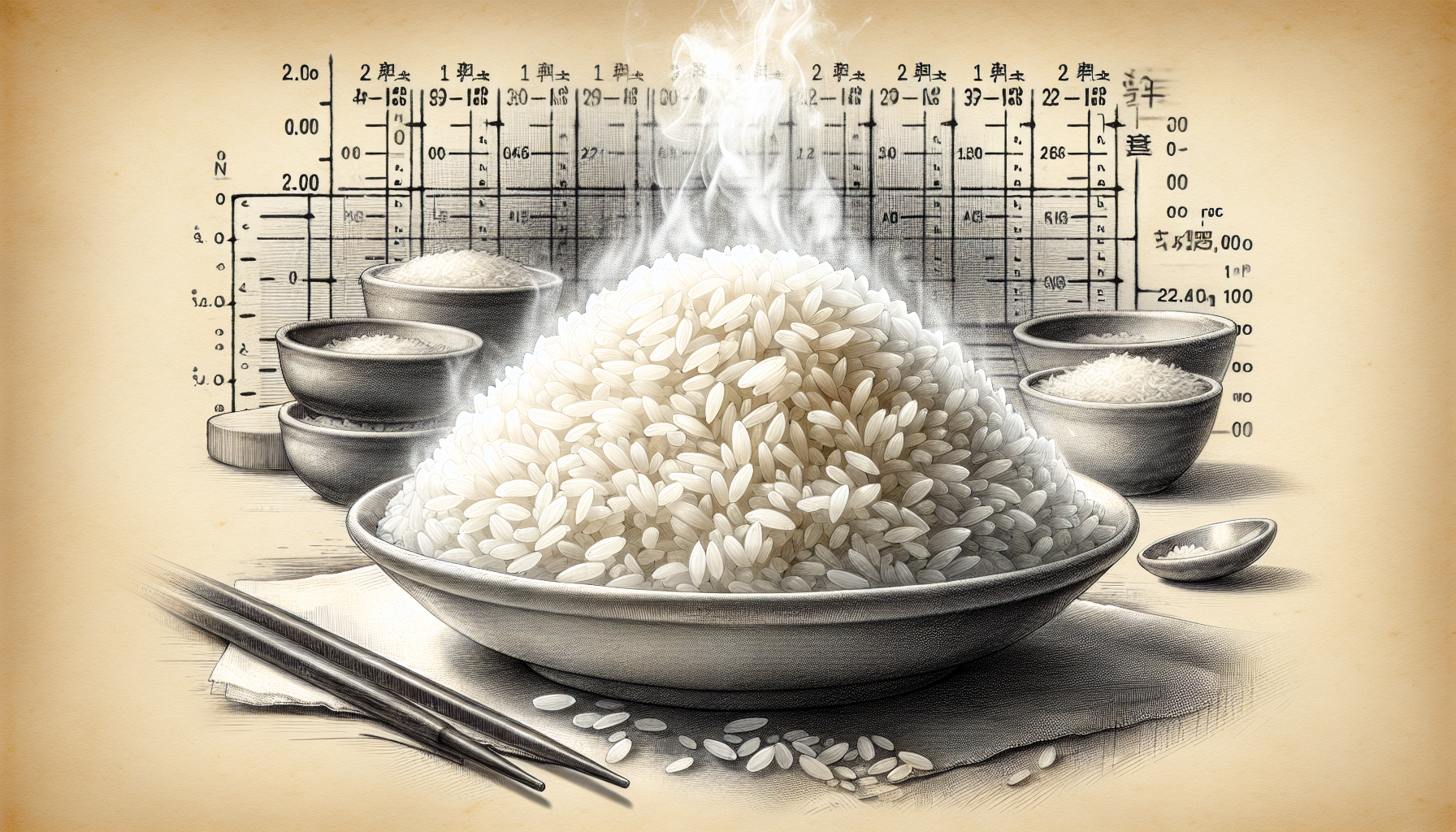Have you ever wondered about the mysterious ratio of rice? It’s a question that has puzzled many, and today we’re here to shed some light on the topic. Is rice 2 to 1 or 3 to 1? That’s the burning question, and in this article, we’ll explore the various opinions and arguments surrounding this debate. So sit back, relax, and let’s dig into the fascinating world of rice ratios together!
What is the 2 to 1 or 3 to 1 ratio?
You may have heard the terms “2 to 1” or “3 to 1” when it comes to rice, but what do they actually mean? These ratios refer to the amount of water to rice that is typically used when cooking. The “2 to 1” ratio means using two cups of water for every cup of rice, while the “3 to 1” ratio means using three cups of water for every cup of rice. The choice of ratio depends on the desired texture and consistency of the cooked rice, as well as personal preference. Some individuals prefer a softer and more tender rice, while others prefer a firmer and more separated texture. It’s important to experiment and find the ratio that works best for you.
Nutritional Composition of Rice
Rice is a staple food for millions of people around the world, and understanding its nutritional composition can help you make informed decisions about incorporating it into your diet. When it comes to the macronutrient content of rice, it primarily consists of carbohydrates, proteins, and fats.
Carbohydrates
Carbohydrates are the main source of energy in rice. They provide fuel for your body and are essential for bodily functions. Rice is considered a high-carbohydrate food, with around 80% of its total calories coming from carbohydrates. Carbohydrates are broken down into glucose, which is then used by your body for energy.
Proteins
Rice is not a significant source of protein compared to other foods like meats or legumes. However, it does contain some protein, with around 7% of its total calories coming from this macronutrient. Protein is important for building and repairing tissues, supporting immune function, and creating enzymes and hormones.
Fats
Rice is naturally low in fat, with less than 1% of its total calories coming from fat. It contains primarily healthy unsaturated fats, while saturated fats are minimal. Fat is important for overall health, as it provides necessary insulation, aids in nutrient absorption, and provides a long-lasting source of energy.
Vitamins and Minerals
Rice is a good source of various vitamins and minerals. Some of the key nutrients found in rice include thiamin, niacin, folate, iron, magnesium, and zinc. These vitamins and minerals contribute to several vital bodily functions, such as energy metabolism, blood cell production, immune function, and bone health.
Caloric Content of Rice
The caloric content of rice can vary depending on the type and cooking method. On average, one cup of cooked white rice contains approximately 200 calories. However, it’s essential to note that the caloric content can increase if rice is cooked in oil or mixed with high-calorie ingredients.

Glycemic Index of Rice
The glycemic index (GI) is a measure of how quickly a food raises blood sugar levels. Foods with a high GI are rapidly digested and absorbed, causing a more significant spike in blood sugar levels. On the other hand, foods with a low GI are digested and absorbed more slowly, resulting in a more gradual increase in blood sugar levels.
White rice has a high glycemic index, meaning it can cause a rapid increase in blood sugar levels. This is because it is processed and has had its bran and germ removed, which removes most of the fiber and nutrients. Brown rice, on the other hand, has a lower glycemic index since it retains more of its natural fiber and nutrients. Choosing brown rice or pairing white rice with high-fiber foods can help mitigate the impact on blood sugar levels.
Comparison of Different Types of Rice
There are various types of rice available, each with its own unique qualities and flavors. Some of the most common types of rice include white rice, brown rice, basmati rice, jasmine rice, and wild rice.
-
White Rice: This is the most widely consumed type of rice. It is milled to remove the bran and germ, resulting in a white and polished appearance. White rice has a mild flavor and a soft and fluffy texture when cooked.
-
Brown Rice: Brown rice is less processed than white rice and retains the bran and germ layers. It has a nuttier flavor and a chewy texture. Brown rice is generally considered healthier than white rice since it contains more fiber and nutrients.
-
Basmati Rice: Basmati rice is a long-grain rice known for its fragrant aroma and slightly nutty flavor. It is commonly used in Indian and Middle Eastern cuisines and is popular for dishes like biryani and pilaf.
-
Jasmine Rice: Jasmine rice is a type of long-grain rice that is commonly used in Southeast Asian cooking, particularly in Thai dishes. It has a subtle floral aroma and a slightly sticky texture when cooked.
-
Wild Rice: Despite its name, wild rice is not technically a rice but rather a type of aquatic grass. It has a chewy texture, nutty flavor, and a dark color. Wild rice is often used in salads, stuffing, and as a side dish.
The choice of rice depends on personal preference, cultural influences, and dietary considerations. Experimenting with different types of rice can add variety and excitement to your meals.
Health Benefits of Rice
Rice offers several health benefits when incorporated into a balanced diet. Here are some of the key advantages:
Provides Energy
As mentioned before, rice is primarily composed of carbohydrates, which are a vital source of energy for your body. Including rice in your meals can provide you with the sustained energy you need to fuel your daily activities and exercise routines.
Supports Digestive Health
Rice, especially brown rice, is an excellent source of dietary fiber. Fiber is crucial for maintaining a healthy digestive system and preventing constipation. It adds bulk to your stool, promoting regular bowel movements and supporting overall gut health.
Is Gluten-Free
For individuals with gluten intolerance or celiac disease, rice is an excellent option as it is naturally gluten-free. Gluten is a protein found in wheat, barley, and rye, and consuming it can cause adverse reactions in those with gluten-related disorders. Rice allows individuals with gluten sensitivity to enjoy a delicious grain alternative without sacrificing taste or nutrition.
Rich in Vitamins and Minerals
Rice contains various essential vitamins and minerals that are necessary for overall health. These nutrients include thiamin (vitamin B1), niacin (vitamin B3), folate (vitamin B9), iron, magnesium, and zinc. Thiamin is important for energy metabolism, while niacin supports brain health and folate is essential for cell growth and development. Iron is crucial for transporting oxygen in the body, magnesium plays a role in hundreds of enzymatic reactions, and zinc is necessary for immune function and wound healing.
Incorporating rice into a well-rounded diet can contribute to your overall nutrient intake and support essential bodily functions.
Potential Risks of Consuming Rice
While rice offers several health benefits, it is essential to be aware of potential risks associated with its consumption.
Arsenic Contamination
Rice, especially rice grown in certain regions, can contain naturally occurring arsenic due to soil and water contamination. Arsenic is a toxic element that can accumulate in the body over time, potentially leading to various health issues. To minimize the risk of arsenic exposure, it is advisable to rinse rice well before cooking and vary your grain choices by incorporating other cereals like quinoa, millet, or barley into your diet.
Blood Sugar Management
As mentioned earlier, white rice has a high glycemic index, leading to a rapid increase in blood sugar levels. This may not be suitable for individuals with diabetes or those trying to manage their blood sugar levels. Choosing lower glycemic index alternatives like brown rice, quinoa, or whole wheat couscous may be more beneficial for blood sugar management.
It’s important to consider your individual health needs and consult with a healthcare professional if you have any concerns regarding rice consumption.
Recommended Serving Sizes of Rice
Serving sizes are crucial when it comes to maintaining a balanced diet and controlling your calorie intake. The recommended serving size of rice depends on various factors, such as age, sex, activity level, and overall calorie needs. However, in general, a standard serving size of cooked rice is around 1/2 to 1 cup. It’s important to note that rice expands during cooking, so 1 cup of uncooked rice will yield a larger amount when cooked.
To maintain a balanced diet, it’s advisable to focus on portion control and build a meal that includes a variety of vegetables, proteins, and healthy fats alongside your rice serving.
Understanding the 2 to 1 or 3 to 1 debate
The debate between the “2 to 1” and “3 to 1” ratios when cooking rice focuses on the desired texture and consistency of the cooked rice. The “2 to 1” ratio, using two cups of water for every cup of rice, typically results in a softer and stickier rice. This ratio is often favored in dishes like risotto and sushi, where a more compact and cohesive rice texture is preferred.
On the other hand, the “3 to 1” ratio, using three cups of water for every cup of rice, produces a lighter and fluffier rice with separated grains. This ratio is commonly used in dishes like pilaf and stir-fries, where the rice needs to remain separate and have a more distinct texture.
Ultimately, the choice of ratio depends on personal preference and the specific dish you are preparing. It’s worth experimenting with both ratios to determine which one best suits your cooking style and desired outcome.
Conclusion
Rice is a versatile and widely consumed food that offers numerous health benefits when incorporated into a balanced diet. It provides an excellent source of energy, supports digestive health, is gluten-free, and contains essential vitamins and minerals. However, it is important to be aware of potential risks associated with arsenic contamination and its impact on blood sugar levels.
By understanding the nutritional composition, caloric content, glycemic index, and different types of rice, you can make informed choices about the role rice plays in your diet. Experimenting with cooking ratios and serving sizes can also help you find the perfect balance for your taste preferences.
Remember that moderation is key, and rice should be enjoyed as part of a diverse and balanced meal plan that includes a variety of whole grains, proteins, healthy fats, and vegetables. So go ahead and savor your rice dishes while keeping your health and well-being in mind.



